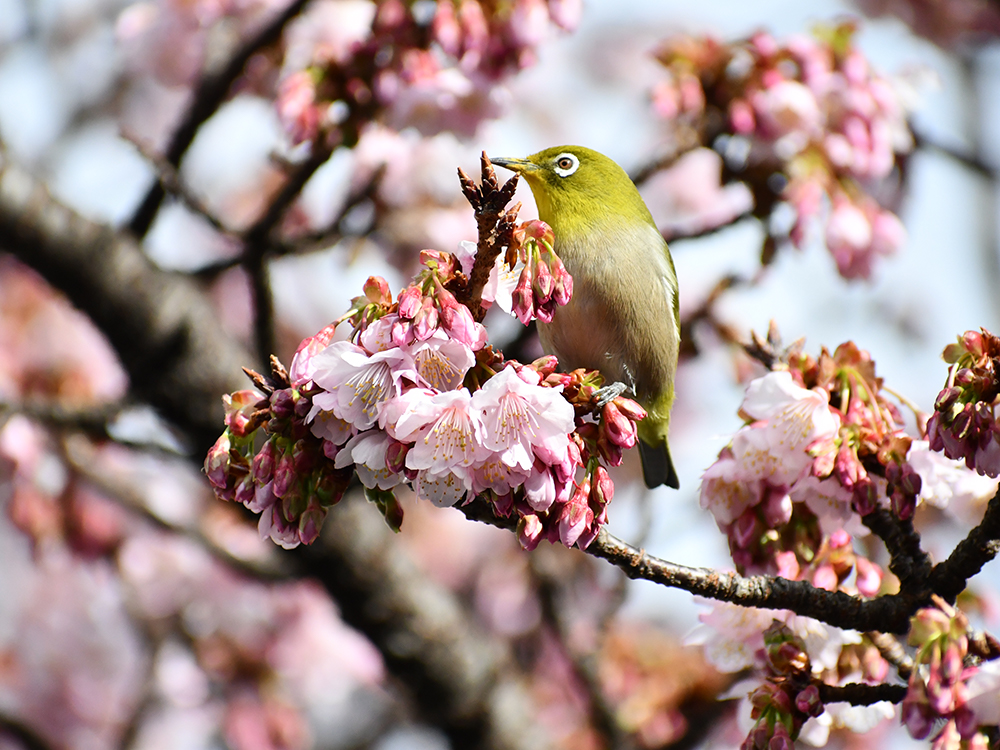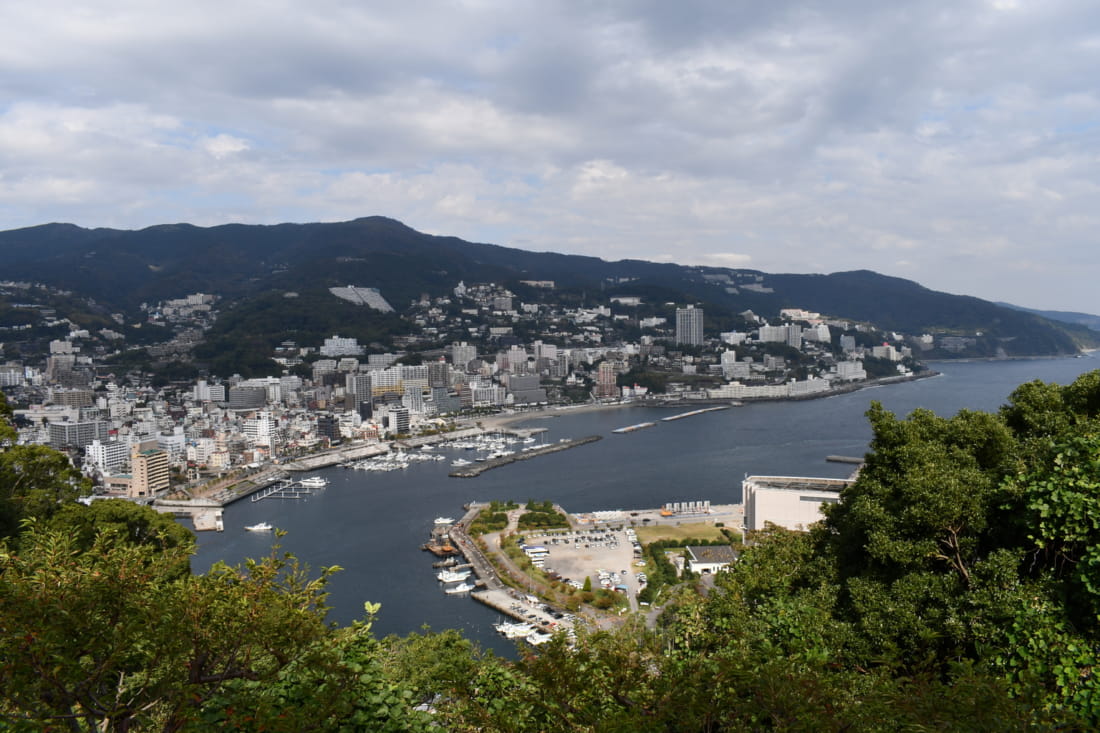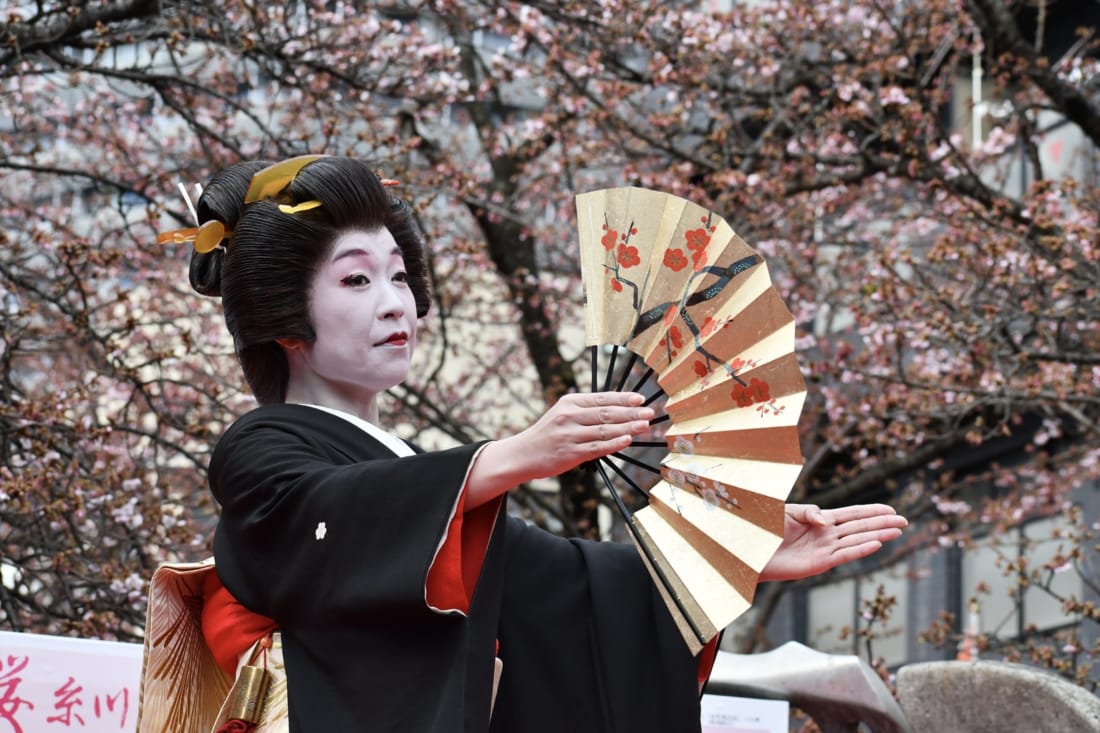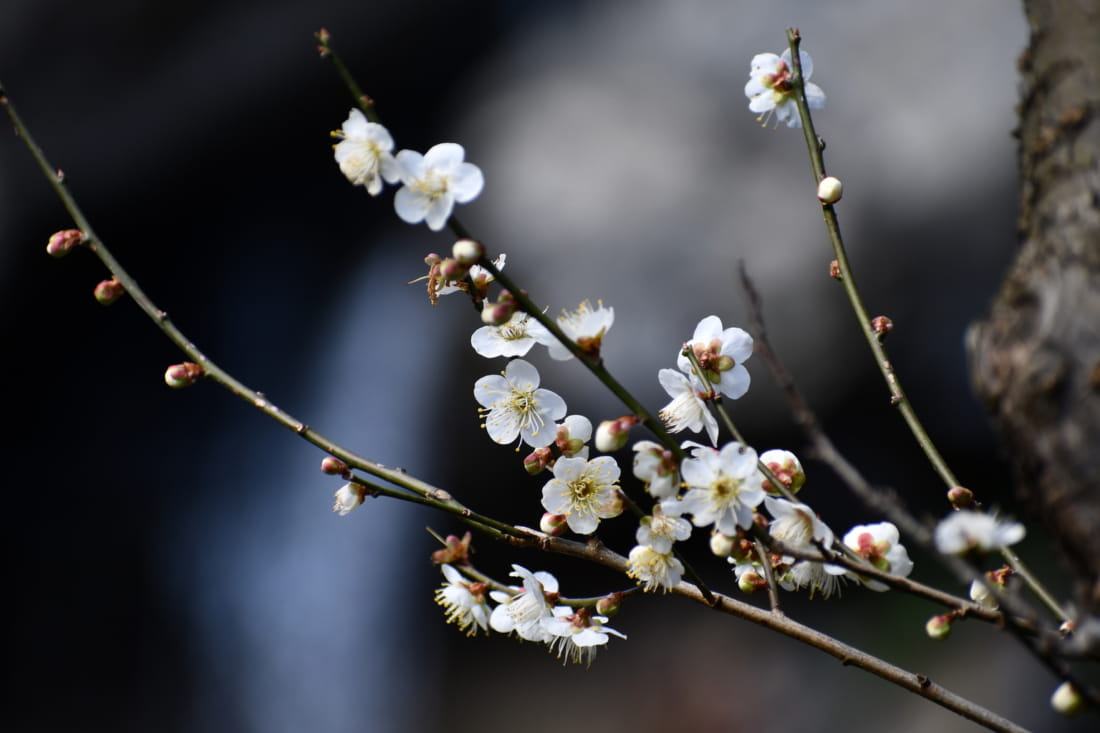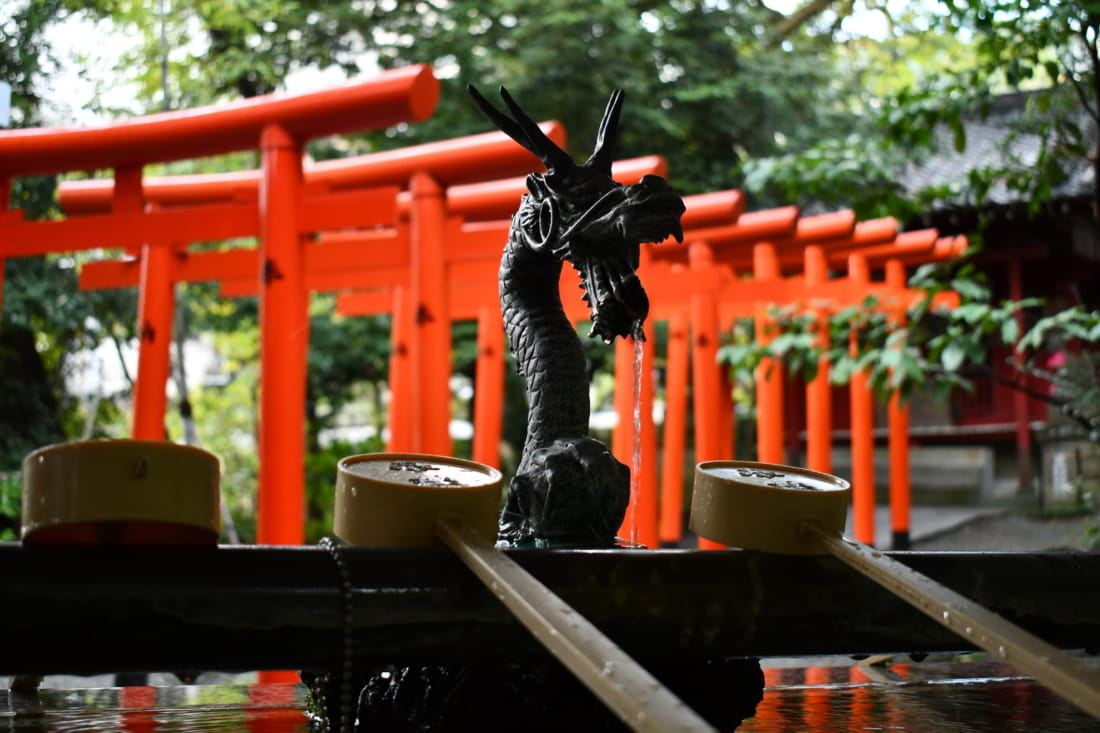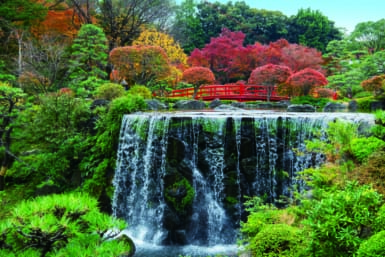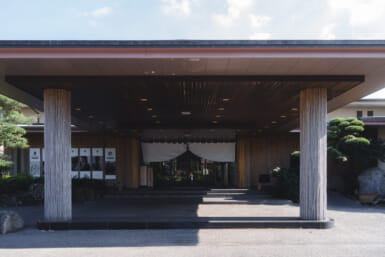Atami, the gateway to Izu Peninsula, is less than an hour by bullet train from Tokyo. A popular seaside resort, the compact city also offers a castle, a fantastic art museum, a plum garden and other attractions.
The town’s name literally translates to “hot sea,” so it’s no wonder that Atami has been a haven for hot spring resorts for centuries. A building boom in the 1980s has left Atami’s steep hillsides covered in nostalgically dated hotels and towering mansions with ocean-view balconies, but there is still plenty of local charm to discover.
Traveling to Atami
As you disembark from Atami Station, be sure to visit the tourist information office, which has maps and information in Japanese, English, Chinese and other languages. There’s also a scalding mineral footbath directly in front of the entrance (if you forgot to bring a towel, purchase one from the nearby vending machine for ¥100).
Atami’s one-day bus pass for ¥700 gets you unlimited rides on the colorful Yu-Yu bus, which stops at most of Atami’s main attractions including Atami Castle, Akao Rose and Herb Garden as well as the major hot springs (onsen) hotels. (There’s also an on-board volunteer guide giving narration in Japanese to local history and sights; ours also spoke excellent English).
Things To Do in Atami
Atami Castle castle is actually a newer addition, having been built in 1959 as a tourist attraction. Admission is a rather steep ¥1,000, and note that all signage and exhibits are in Japanese only. The main draw for me was the outstanding panoramic view and the hot spring footbaths at the back of the first floor with gorgeous views over the bay.
Opened in 1982, the MOA Museum of Art was recently refreshed. In addition to an excellent collection of Oriental ceramics and art, the museum has several cafés and restaurants with sweeping views of Sagami Bay. Outside, the museum offers exquisite Japanese gardens, teahouses and traditional restaurants nearby; don’t miss the Atami set lunch at Hana-no-Chaya, limited to 25 servings daily.
Things To See in Atami
Kiunkaku Former Ryokan will be sure to delight fans of Japanese architecture. Now owned by Atami City, this private villa-turned-ryokan dating from the Taisho Era is a quirky combination of Japanese and Western elements, including Roman-style tiled baths. There is a café with a view of the superb traditional landscape gardens.
Atami Baien features the earliest-blooming plum blossoms in Japan, with a plum festival running from early-January to early March. Normally free, the garden charges 300 yen admission during the festival and features footbaths, souvenir shops and a wide variety of events (note that there is no lightup for the plum blossom festival; the garden closes at 16:00).
Visit Historic Shrines
Atami’s 2,000-year history is deeply entwined with Shinto. If you’re up for a steep but rewarding climb, brave the 837 stairs to small-but-scenic Izusan Shrine, where Minamoto no Yoritomo, the first Kamakura shogun, sought refuge and met his future wife (hence the matchmaking charms and reputation as a “love shrine”) and Tokugawa Ieyasu was said to worship. The shrine’s iconic dragons are the guardians of Atami’s hot springs and said to be the source of its hot spring waters (the red dragon represents fire and the white dragon represents water).
Nearby Kinomiya Shrine dates back 1,300 years and houses the god of fortune and luck. Highlights include a 2,000-year-old sacred camphor tree, the largest in Japan, that is illuminated after sunset. It’s said if you walk around the massive tree, it will extend your life and grant wishes. The shrine also has a very nice café on the premises.
To gain a deeper appreciation for Atami’s history and charms, consider signing up for a volunteer guide through Atami Guide Club. To request a guide, apply online at least 10 days prior to your visit.
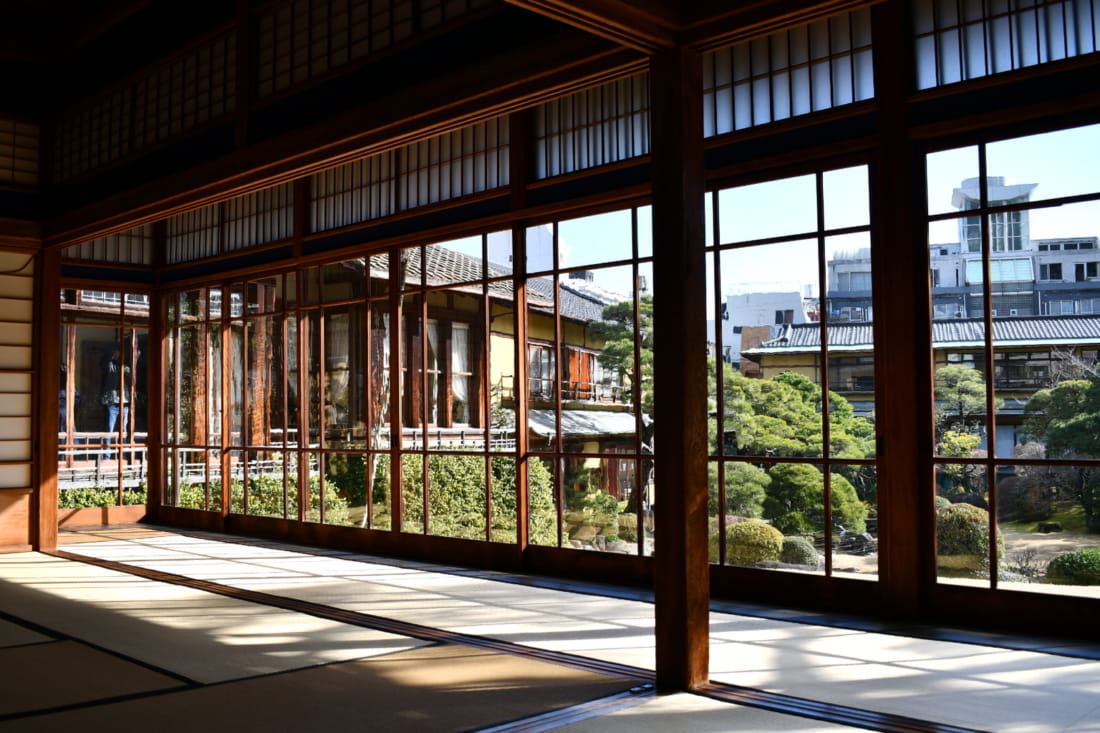
Access from Tokyo:
– JR Tokaido Shinkansen Kodama from Tokyo Station, 52 mins, ¥4,270
– JR “Acty” from Tokyo Station, 1 hr 36 mins, ¥1,980
– Odakyu line Limited Express Romance Car from Shinjuku Station to Odawara, 1 hr 10 min, ¥900), then transfer to JR line to Atami (23 minutes, ¥418)

